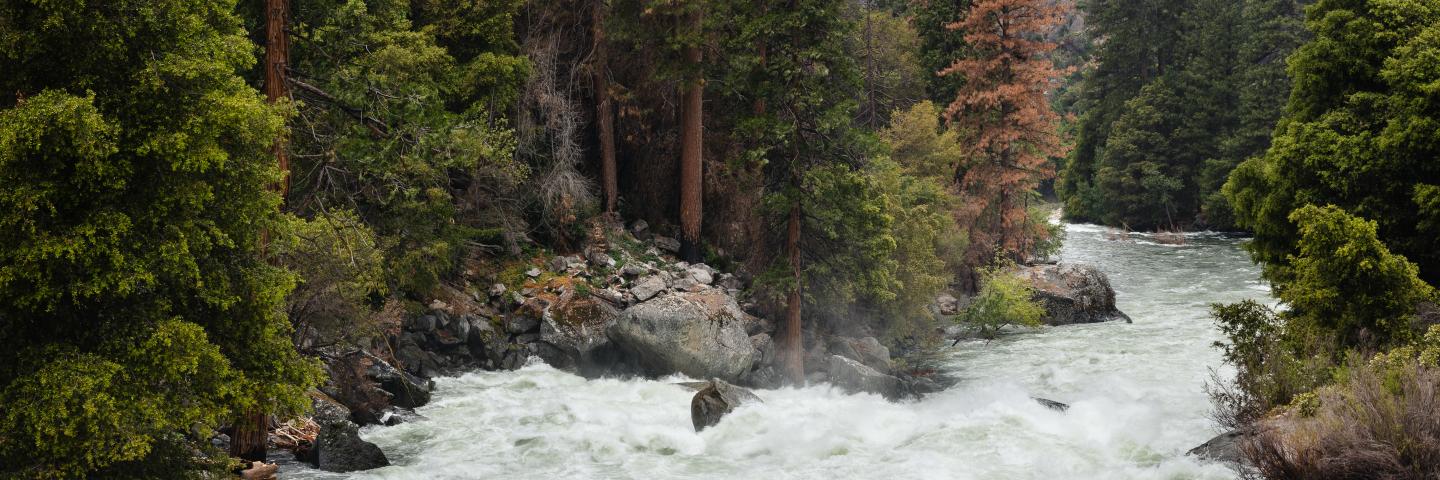
Conditions and Outlooks - Select Basin Pages
Umatilla River and McKay Creek
Silvies River
To view the latest snowpack related flood risk information for the basins listed above please visit and bookmark these links.
Flash Flooding, Snowpack & Rainfall
Flooding can occur due to different combinations of basin conditions, geography, and weather events. Temperature alone can cause flooding, especially if snowpack is above normal. However, there are usually a combination of factors to consider when assessing risks for flash flooding. For many basins in Oregon, one such combination that may result in flash floods is atmospheric rivers (ARs) and relatively steep mountain watersheds. Other contributing factors that enhance flood risks are wildfire burn scars and reservoir storage.
Atmospheric Rivers
ARs are long atmospheric channels that transport moisture as water vapor from the tropics to the U.S. West Coast. These storms are categorized based on the amount of transported water vapor and duration. Depending on the storm cycle, these storms can bring a mix of both snow and rain in the mountains, in addition to high winds that increase heat transfer between the atmosphere and snowpack. The combination of abundant snow, heavy rainfall on top of snow, and high winds often leads to rapid runoff into streams, in turn rapidly increasing streamflow.
Post-Wildfire
Following a wildfire, forests in mountainous regions may have reduced canopy coverage and vegetation and less permeable soils. In mountainous watersheds, these factors often increase flood risks, especially during heavy rainfall. With a sufficient reduction in canopy and vegetation, snowpack is more susceptible to melt due to increased exposure to rain, wind, and solar radiation at the snow surface. Thus, snowpack is more vulnerable to rapid melting than in unburned forests.
Reservoir Storage
Although reservoir operators often control storage levels to accommodate for flood events, there are times when heavy rainfall and rapid rates of snowmelt may require operators to release relatively high volumes of water. This may enhance flood risks depending on floodplain morphology, amount and rate at which water is released, and downstream flood infrastructure.
Snowmelt Indicators
Snowpack density is generally a good parameter to determine if snowpack is “ripe”. Ripe snowpack is at the melting temperature (32° F) across much of its depth and saturated with water. Once snowpack is at the melting temperature, melting may occur more rapidly depending on prevailing conditions.
When snowpack is considered “high density” (near or exceeding 40%), water is more readily released from the snowpack as snowmelt. Snow density is proportional to the liquid water content in the snowpack, or snow water equivalent (SWE). Generally, as SWE declines due to melting, the density tends to increase because the proportion of liquid water to soild ice within the snowpack is increasing. During ripening of the snowpack, SWE may increase as more liquid water fills the void spaces in the snowpack.
Snow depth is typically not a great indicator of snowpack, since snow depth commonly decreases due to other factors such as wind and compaction.
Resources to Prepare for Flash Floods
The links to specific basins above provide information on current and recent conditions and flood and weather outlooks. These data are essential for assessing flash-flood risks during rainstorms and rain-on-snow events. In addition, knowing where burned areas are in watersheds can also be important to prepare for floods. See the link below to view burned areas.
Interactive Burned Area Map
While flash-flood risks cannot be eliminated entirely, there are steps to reduce impacts to life and property. Learn how to prepare for a flood using the resources below.
Oregon Health Authority - What to do before, during and after a flood
Contact Oregon Snow Survey
Questions regarding flood awareness or rain-on-snow events? Contact us via e-mail by clicking the header above.


